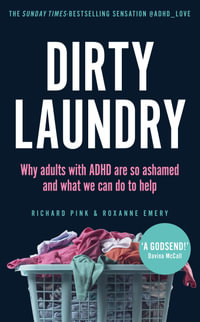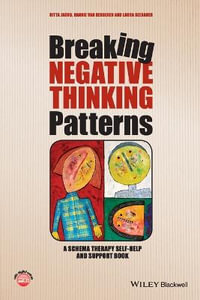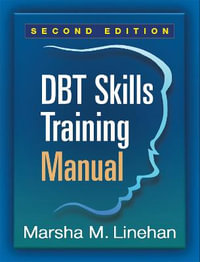
Therapy with Tough Clients
Exploring the Use of Indirect and Unconscious Techniques
By: George Gafner
Paperback | 16 April 2014
At a Glance
316 Pages
23.4 x 15.6 x 2.54
Paperback
RRP $52.99
$51.25
or 4 interest-free payments of $12.81 with
orAims to ship in 5 to 10 business days
Industry Reviews
Therapy with Tough Clients was primarily written to be of help to the clinician by offering a variety of approaches to treating challenging cases. But the book does much more than this: Gafner challenges us to recognize and transcend our own limitations, encouraging a personal growth that will no doubt spill into performing more creative and effective psychotherapies. Read this book and you will be better in more ways than one!
Michael D. Yapko, Ph.D., author of Trancework (4th ed.) and Depression is Contagious
Fans of Milton Erickson and his work with metaphors will very likely love George Gafner's new book, Therapy with Tough Clients: The Use of Indirect and Unconscious Techniques. Even in the early pages, it becomes obvious that the author has mastered the use of metaphors.Gafner discusses different categories of metaphors as well: darkness, weight, captor, and descent. Additionally he mentions aoverused metaphorsa as well as misunderstood cultural metaphors. Even before the hypnotic experience he listens to clients' metaphors.The book threads considerable information on case histories of two clients who had IBS among other problems (Maggie and Charles). He introduces them in the first chapter, with their progress appearing in several other chapters as well; but the author does not limit the book only to Maggie and Charles. One interesting case was how he successfully handled a potentially volatile situation when an angry spouse burst into the middle of her husband's session. Therapy with Tough Clients is filled with various metaphors; but the author also believes in the value of ego strengthening, devoting an entire chapter emphasizing it. At the same time, he shows his human side by sharing a couple of aooopsa comments to let us know that he also makes mistakes. George Gafner says, aTherapy is more of an art than science, a and I totally agree. It is obvious that he is a master of the artistic use of metaphors in therapy, and his book is easy to read.
Roy Hunter, FAPHP, DIMDHA, Published Author of several hypnosis books
Gafner describes how he treated two patients, each one suffering from a complex diagnosis. It is a privilege to walk in the metaphorical footsteps of the author as he unravels the difficult emotional and subconscious layers of the various symptoms.One follows the master practitioner as he advances his therapy. He uses tales which resonate with the client's subconscious. He also emphasizes patience as a vital quality for the therapist to employ when progress seems slow. Ego-strengthening, Gafner believes, is a virtually vital element in all treatment.The book is interesting and useful.
Henry A Garfinkel FRCP FRCPE FACP
George Gafner devoted his professional career to refining his approach to hypnosis to benefit the clients with whom he worked. This book provides a distillation of years of exploration, study, and clinical practice that George shares with us in an engaging and highly readable manner. George presents interesting and complex cases and aptly demonstrates how hypnosis is often the treatment of choice due to the wide variety of options it provides. The book is clear and comprehensive, insightful and illustrative. Readers will find a depth of knowledge and analysis in these pages that will stimulate valuable ideas that can be utilized in their own work.
Brent B. Geary, Ph.D.
George Gafner is a seasoned clinician who provides a variety of creative ways to use hypnotic procedures and story telling to treat diverse clients. He uses case vignettes effectively to illustrate the process of therapeutic decision-making. Any one who is a follower of the Milton Erickson mode of intervention will find this book engaging and informative.
Donald Meichenbaum, PhD, Distinguished Professor Emeritus, University of Waterloo, Ontario, Canada and Research Director of the Melissa Institute for Violence Prevention, Miami, Florida
George Gafner's aTherapy with tough clients' is an exceptional book which draws on a variety of clients and clinical problems. The stories included in this book reflect a small percentage of seemingly unreceptive patients, that the author encountered during the span of his career. Referring to his two case studies- Maggie and Charles, George guides the reader's understanding in which approaches and techniques are appropriate for each person, in a aone does not fit all' perspective. Through great passion, consideration and experience, George highlights the significance unconscious processing has on the outcome of therapy for some and illustrates why some patients gain more than others in therapy.
Bianca Peachey, student at Westminster University, London
When searching the bookshelves it is evident that there is virtually no literature available devoted to exploring the tricky subject of handling challenging clients, especially from a hypnotherapy perspective. Not afraid to meet this difficult aspect of the therapeutic relationship head on, George Gafner has written a thought-provoking book that admirably fills this glaring void. Espousing a refreshing pluralistic approach to therapy he explores working with overt and covert resistance, whilst openly discussing the often taboo subject of the therapist's personal cognitive and emotional reactions.One of the many highlights of this engaging book is that approaches are illustrated through on-going case studies, which are constructively dissected, affording the reader the opportunity to fully get to grips with every nuance. Ostensibly based around PTSD, there is much to learn for those not versed in the treatment of trauma as each approach is adaptable to any client that presents a challenge to the therapeutic process. Gaffner is an expert in therapeutic story telling and therefore this book is unashamedly based around metaphor. That said, other aspects of hypnotherapy, including the use of paradox, are effectively demonstrated in situ in the abundant therapy transcripts. The author also includes informative discussions on the potentials and pitfalls of using cultural metaphors, whilst overviewing hypnotic language and hypnotic phenomena for those new to hypnotherapy. With therapists from every background in mind, the author discusses how approaches can be applied both hypnotically and non-hypnotically. He also explores their application in a diverse range of settings, from couples therapy to those working with people held in correctional facilities.This is a well-rounded book that holds something for everyone, irrespective of their therapeutic background.
Peter Mabbutt FBSCH, CEO/Director of Studies London College of Clinical Hypnosis
ISBN: 9781845908782
ISBN-10: 1845908783
Published: 16th April 2014
Format: Paperback
Language: English
Number of Pages: 316
Audience: Professional and Scholarly
Publisher: CROWN HOUSE PUBLISHING
Country of Publication: GB
Dimensions (cm): 23.4 x 15.6 x 2.54
Weight (kg): 0.53
Shipping
| Standard Shipping | Express Shipping | |
|---|---|---|
| Metro postcodes: | $9.99 | $14.95 |
| Regional postcodes: | $9.99 | $14.95 |
| Rural postcodes: | $9.99 | $14.95 |
How to return your order
At Booktopia, we offer hassle-free returns in accordance with our returns policy. If you wish to return an item, please get in touch with Booktopia Customer Care.
Additional postage charges may be applicable.
Defective items
If there is a problem with any of the items received for your order then the Booktopia Customer Care team is ready to assist you.
For more info please visit our Help Centre.
You Can Find This Book In

When A Loved One Won't Seek Mental Health Treatment
How to Promote Recovery and Reclaim Your Family's Well-Being
Paperback
RRP $42.99
$21.25
OFF

Trauma-Focused ACT
A Practitioner's Guide to Working with Mind, Body, and Emotion Using Acceptance and Commitment Therapy
Paperback
RRP $113.95
$71.90
OFF

Dirty Laundry
Why Adults with ADHD Are So Ashamed and What We Can Do to Help - THE SUNDAY TIMES BESTSELLER
Paperback
RRP $36.99
$33.25
OFF

The Mindful Self-Compassion Workbook
A Proven Way to Accept Yourself, Build Inner Strength, and Thrive
Paperback
RRP $59.99
$39.25
OFF

Polyvagal Flip Chart
Understanding the Science of Safety (Norton Series on Interpersonal Neurobiology)
Paperback
RRP $57.95
$38.50
OFF

The Borderline Personality Disorder Workbook
An Integrative Program to Understand and Manage Your BPD
Paperback
RRP $47.50
$45.25

















